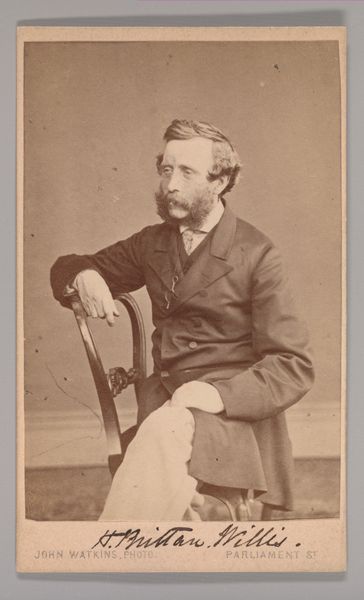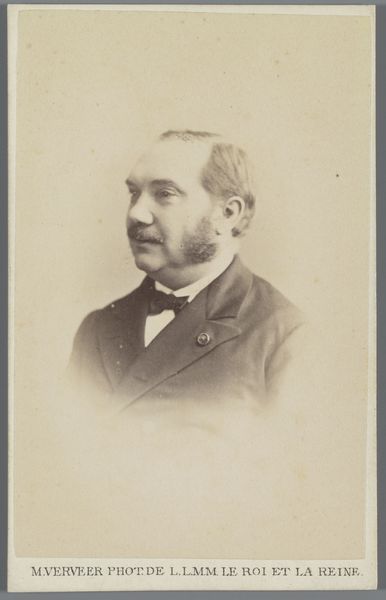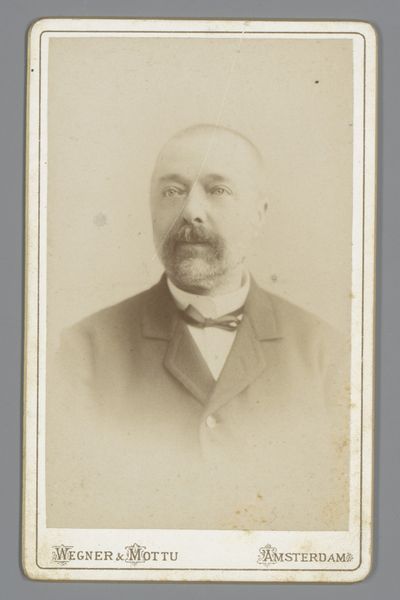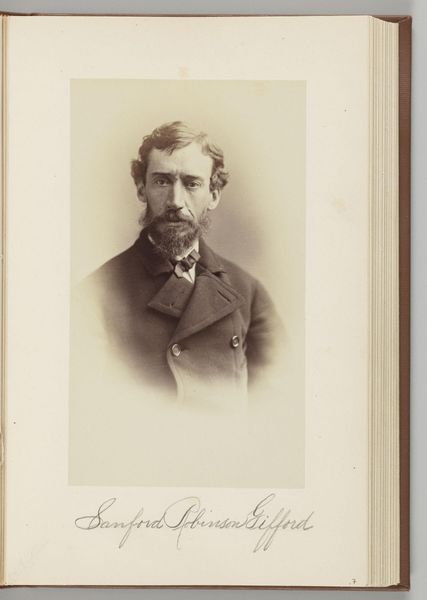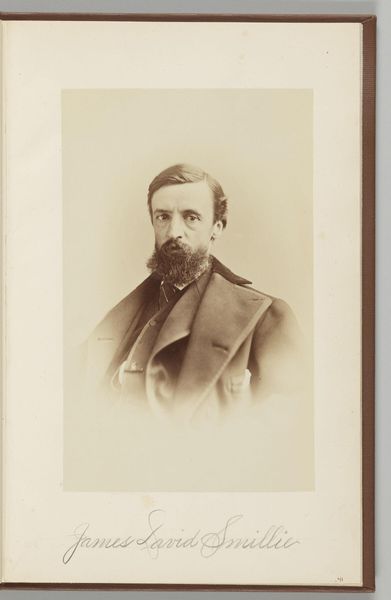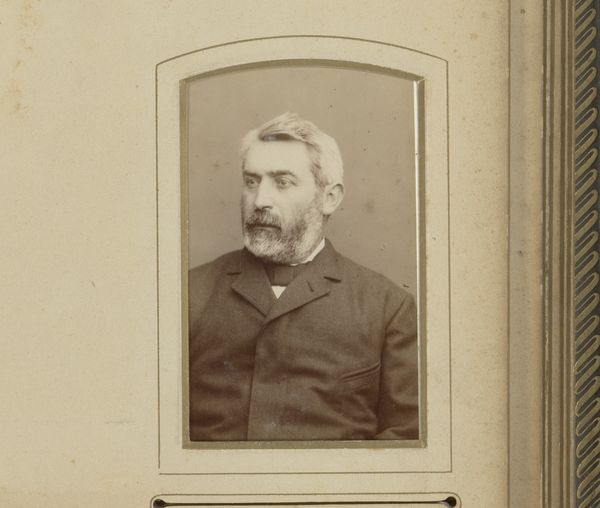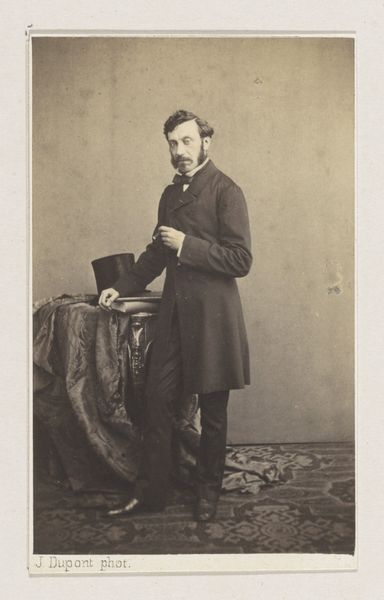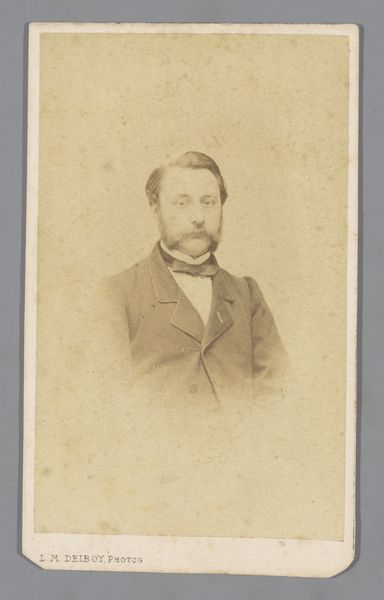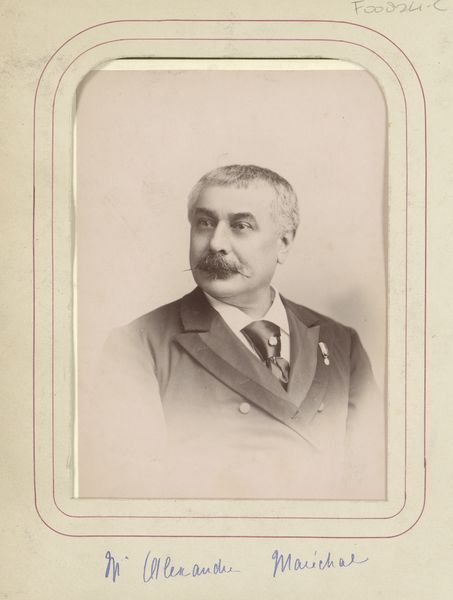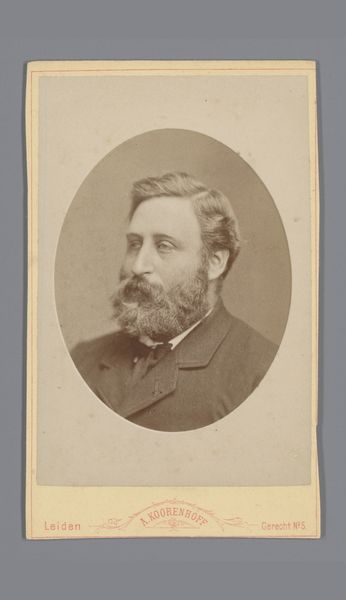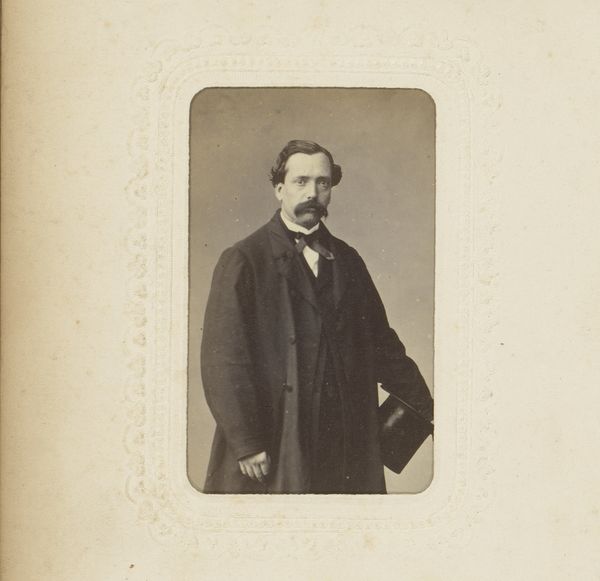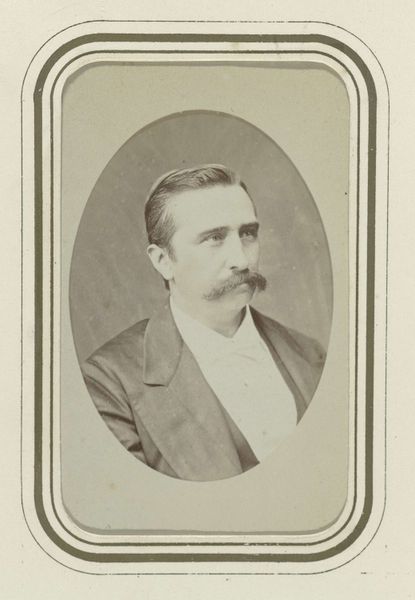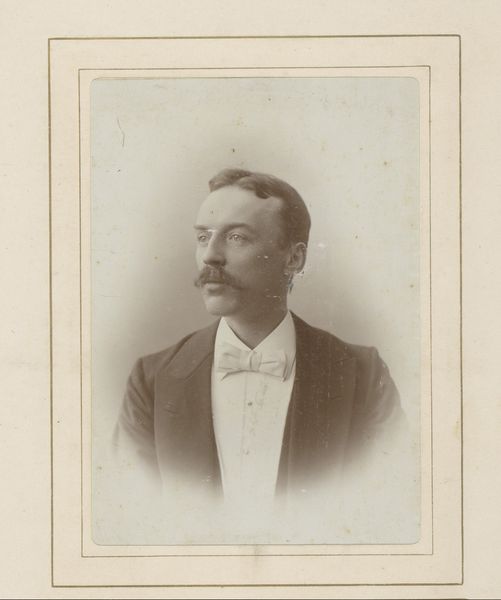
photography, gelatin-silver-print
#
portrait
#
photography
#
historical photography
#
gelatin-silver-print
#
19th century
#
realism
Dimensions: height 163 mm, width 105 mm
Copyright: Rijks Museum: Open Domain
Curator: Welcome. Here we have a portrait captured through a gelatin-silver print dating from 1870 to 1900. The sitter is Louis Gregh, his image produced by the studio of Louis Martin. Editor: It's compelling; the monochrome and pose radiate an almost severe formality. He seems like someone aware of his position, guarded, even. I wonder, what does his fur-collared coat signify? Curator: Considering this was taken during a period of immense social stratification, these photographic portraits, in particular, became a statement of bourgeois status, and indeed, an avenue to disseminate ideals about class and power. This sartorial choice subtly broadcasts his social standing and the cultivation of a specific type of masculinity. Editor: It makes you think about the studio's role too. Louis Martin must have had a particular vision, one echoed and reinforced by the many portrait commissions he took on. What expectations were put on the sitter to perform wealth, class, and taste through these types of photos? Curator: Exactly! The photographic studio itself functioned as a cultural institution, dictating acceptable poses and attire. Photography played a critical role in the construction of identity, especially as the bourgeois gained economic and political power. These portraits were not simply records; they were performative acts staged and disseminated. Editor: You’ve made me see the complexities interwoven into this simple portrait, highlighting questions of power and performance embedded within it. Thanks! Curator: It is in viewing art as embedded within socio-political structures that its historical function can be truly appreciated.
Comments
No comments
Be the first to comment and join the conversation on the ultimate creative platform.
